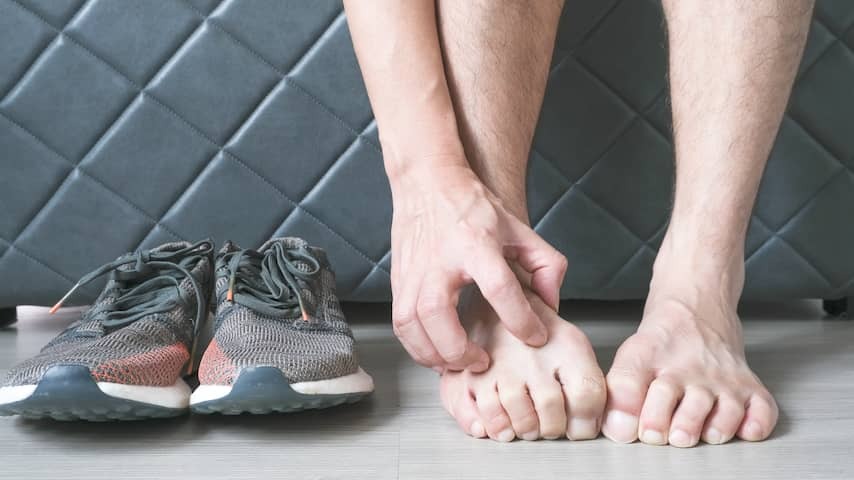
With the warm weather, you’ll be showing your feet more often. Whether it’s by the pool or in sandals. A lot of people suffer from athlete’s foot, thick yellow nails, or athlete’s eczema. Here’s how to fight fungus on your feet.
Athlete’s foot is a super persistent ailment, says podiatrist Marijn van Olderen from Voetencentrum Wender. You have to eradicate it root and branch.
“Fight the fungus very specifically,” advises Van Olderen. “There are all kinds of remedies for sale at the drugstore, but you probably don’t know exactly which fungus you have between your toes. So go to the family doctor or skin therapist. They can take a culture and prescribe a remedy that cures your specific fungus.”
Fungus in your shoes
Such athlete’s foot feels excellent in a warm, dark, moist, and narrow shoe. If they are made of synthetic material, all the more so. “That’s where it often goes wrong,” Van Olderen knows. “The athlete’s foot is fought, but it also leaves traces in shoes and socks.”
“If you keep wearing the same shoes that contain that fungus, your feet will be repeatedly affected by that fungus.” That doesn’t mean you have to throw away your shoes immediately.
What are the symptoms?
Fungi often occur between the toes, especially between the fourth and fifth, the two smallest. The skin becomes soft, cracks and fissures appear, and the skin can turn white, flake, turn red, or develop blisters. You get itching of the skin.
Often the fungus also spreads to the soles of the feet and even further to the nails. That causes pain when walking. It starts to smell unpleasant, and bacteria may settle on the skin. Fungal nails can become white-yellow, green, or brown in color. The nails become thick and crumbly and can come loose.
After-treatment is crucial once you have tackled your fungus. You can buy antifungal powder at better shoe stores. And wash all your socks at at least 60 degrees. “Buying shoes at the thrift store is fine, but I would definitely treat them well with an antifungal product first. There is a good chance that fungi live in second-hand shoes.”
The anatomy of your feet can also work against you if the fungus keeps coming back. Van Olderen: “Feet are not always straight and flat, with five toes neatly next to each other. Toes sometimes lie over each other, making it extra difficult to keep the skin between them dry. And if you are unlucky enough to sweat a lot, it often stays damp in the sock. That is the ideal environment where a fungus grows nicely.”
Don’t blow-dry your feet
Keep them dry, says the podiatrist. “And don’t go on one leg like a circus bear with your towel threading between your toes. Sit down, take your time, dry everything well. If the skin is affected or sensitive, dab the toes dry well. And wait a while before putting on your socks.”
Don’t blow-dry: you can burn your feet. Especially people with chronic conditions, such as diabetics, should be careful with this, because they often have less feeling in their feet due to their condition. “The veins and nerves in the feet are the first to be affected by diabetes, just like those in the eyes. “They don’t feel the wounds, have low resistance, and can contract a nasty infection.”